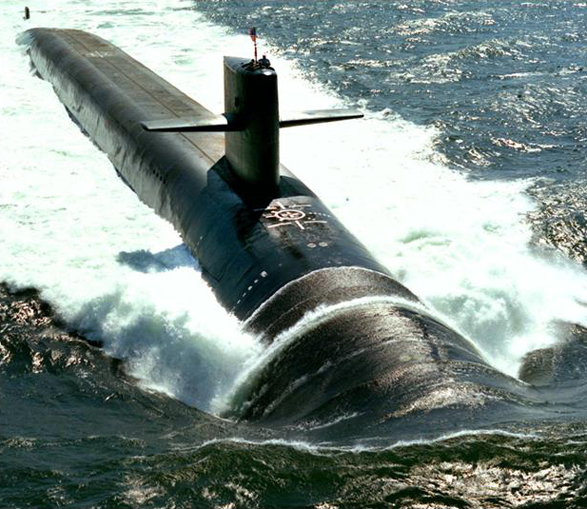Electric Boat Corporation, Groton, CT, first started evaluating laser scanning technology in November 2001. The General Dynamics subsidiary, which designs, constructs and supports submarines for the U.S. Navy, is seeking the best way to capture shipboard as-built conditions – the company hopes to use laser scanning on the SSGN program to validate the redesign of Trident-class submarines, among other applications, according to Raj Thiyagarajan, engineering specialist with EB and technical lead for its laser scanning investigation. The Trident SSGN is a modification of the four oldest Ohio-class (Trident) ballistic-missile submarines into a multi-mission platform optimized for covert strike and special operations warfare. Accurate, up-to-date as-built data is critical as a starting point for these modifications. CAD design models are often out of synch with as-built conditions by the time construction of a ship is complete, never mind after years of operation, maintenance and modification.
EB’s aim is to assess laser scanning’s potential to produce significant cost savings for the shipbuilding industry, Thiyagarajan reported to SPAR 2005 attendees. The potential savings start with lower direct costs of as-built and topographic surveys than traditional methods. Another benefit is the “reduction or elimination of costly return visits to the site for missed measurements during the previous survey.” Yet another is “more accurate, complete as-built data for retrofit design projects, which translates into better retrofit designs – these translate into less construction rework.” Of course the real prize is “reduced ship downtime, driven by fast data collection and minimal field fit-up, field fabrication and field rework.” An added bonus is that “measurements of as-built conditions can be made readily available at any future time as needed.”
Captured as-built data can be used to perform several different tasks: retrofit design projects such as SSGN, reverse engineering (creating 3D solid models of existing objects), and validation of 3D CAD design models against captured as-built data. The data can also be archived as point clouds, so areas of concern can be viewed as and when needed.
An important thing to note in using laser scanning for ship check, according to Thiyagarajan, is that planning ahead is a must to save time and money. EB’s investigations showed that the first step is to identify the space envelope needed for data collection, then define the requirements – determine the level of detail (LOD) needed for each area in the space envelope. This is dependent on what kind of final product is needed for each ship check or field survey. Based on the space envelope and LOD required, the next step is to decide what technology (hardware and software) is needed, either to create a new model or to validate an existing design model.
EB very satisfied with accuracy of laser scan data
EB has confidence in the accuracy of the data collected using 3D laser scanners based on the results from several field projects EB conducted using 3D laser scanning technology. “We took tape measurements and compared them with the results of laser scan data capture,” Thiyagarajan reports. “We are very satisfied with the accuracy of laser scan data.”
Post-processing is a different story. “Data capture is easy, but modeling is tougher,” Thiyagarajan notes. “We had to use several software products to create an AutoCAD model.” Besides more straightforward creation of CAD geometry from point cloud data, easier field checking of scan coverage would be helpful. “Software vendors should be providing the capability, with hardware vendors, to let the operator make sure he has gotten complete coverage before leaving the field.” Catalog data import would also be useful. “We would like software vendors to make it possible to bring in catalog parts and overlay them on the scan data rather than having to model them manually from the point cloud.”
NSRP Ship Check Data Capture Project
Thiyagarajan and EB are also involved in a cost-share project awarded by the National Shipbuilding Research Program (NSRP) to evaluate ship check data capture technologies. The Ship Check Data Capture Project aims to deliver a process to capture ship check data in digital format, process the digital data, and create and/or validate 3D CAD models from the data captured in digital format, cost-effectively.
The Ship Check Data Capture Project included comparisons of iQsun880, Leica HDS4500, 3Dguru, Minolta Vivid9i Digitizer and photogrammetric data and work processes. geovisit();






